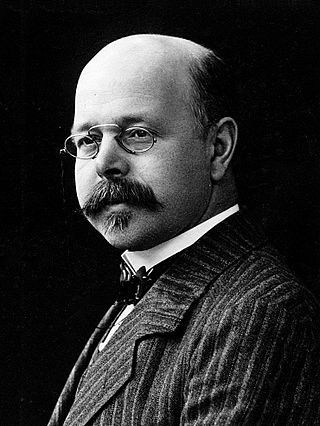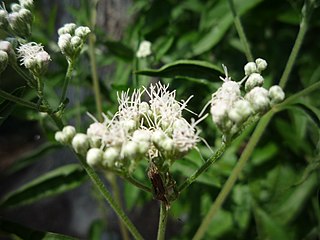
Walther Hermann Nernst was a German physicist and physical chemist known for his work in thermodynamics, physical chemistry, electrochemistry, and solid-state physics. His formulation of the Nernst heat theorem helped pave the way for the third law of thermodynamics, for which he won the 1920 Nobel Prize in Chemistry. He is also known for developing the Nernst equation in 1887.

Otto Wallach was a German chemist and recipient of the 1910 Nobel Prize in Chemistry for his work on alicyclic compounds.

Johann Friedrich Gmelin was a German naturalist, chemist, botanist, entomologist, herpetologist, and malacologist.

Richard Adolf Zsigmondy was an Austrian-born chemist. He was known for his research in colloids, for which he was awarded the Nobel Prize in chemistry in 1925, as well as for co-inventing the slit-ultramicroscope, and different membrane filters. The crater Zsigmondy on the Moon is named in his honour.

Hans Fischer was a German organic chemist and the recipient of the 1930 Nobel Prize for Chemistry "for his researches into the constitution of haemin and chlorophyll and especially for his synthesis of haemin."
Harold Ernest Robinson was an American botanist and entomologist.

The Gottfried Wilhelm Leibniz Prize, or Leibniz Prize, is awarded by the German Research Foundation to "exceptional scientists and academics for their outstanding achievements in the field of research". Since 1986, up to ten prizes have been awarded annually to individuals or research groups working at a research institution in Germany or at a German research institution abroad. It is considered the most important research award in Germany.

Friedrich A. Kittler was a literary scholar and a media theorist. His works relate to media, technology, and the military.

Robert Wichard Pohl was a German physicist at the University of Göttingen. Nevill Francis Mott described him as the "father of solid state physics".
Richard Becker was a German theoretical physicist who made contributions in thermodynamics, statistical mechanics, superconductivity, and quantum electrodynamics.
Karl August Otto Hoffmann was a German botanist and a high school teacher in Berlin. Author of Sertum plantarum madagascariensium, the genus Hoffmanniella in the family Asteraceae was named after him by Rudolf Schlechter. The plant genus of Hoffmannanthus (also in the family of Asteraceae was named after him in 2014.

Eupatorium serotinum, also known as late boneset or late thoroughwort, is a fall-blooming, perennial, herbaceous plant native to North America.

Wilhelm Biltz was a German chemist and scientific editor.

Egbert (Bert) Willem Meijer is a Dutch organic chemist, known for his work in the fields of supramolecular chemistry, materials chemistry and polymer chemistry. Meijer, who is distinguished professor of Molecular Sciences at Eindhoven University of Technology (TU/e) and Academy Professor of the Royal Netherlands Academy of Arts and Sciences, is considered one of the founders of the field of supramolecular polymer chemistry. Meijer is a prolific author, sought-after academic lecturer and recipient of multiple awards in the fields of organic and polymer chemistry.
Helmut Schwarz is a German organic chemist. He has been a professor of chemistry at the Technische Universität Berlin since 1978. In 2018, he was elected a foreign associate of the U.S. National Academy of Sciences.

Georg Bohlmann was a German mathematician who specialized in probability theory and actuarial mathematics.
Iris Anna Runge was a German applied mathematician and physicist.
Friedrich Böhm was a German actuarial and insurance mathematician and university lecturer. During World War II, Böhm was conscripted into Group IV of Inspectorate 7, an early cipher bureau and Signals intelligence agency of the German Army (Wehrmacht), working to decode foreign Ciphers. He would later work in the successor organization: General der Nachrichtenaufklärung, in a similar role.

Norbert Schappacher is a German mathematician and historian of mathematics. He was an Invited Speaker at the International Congress of Mathematicians in 2010 in Hyderabad.













